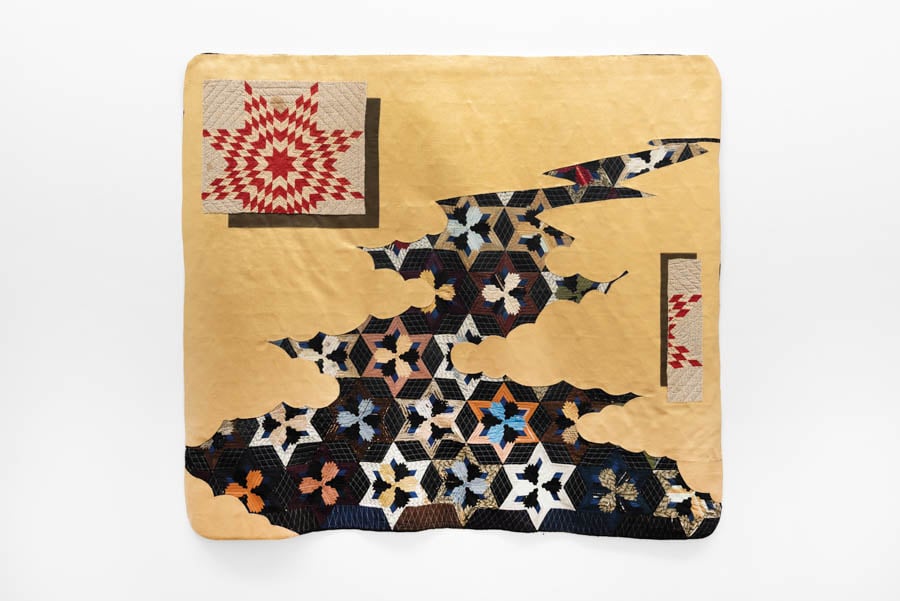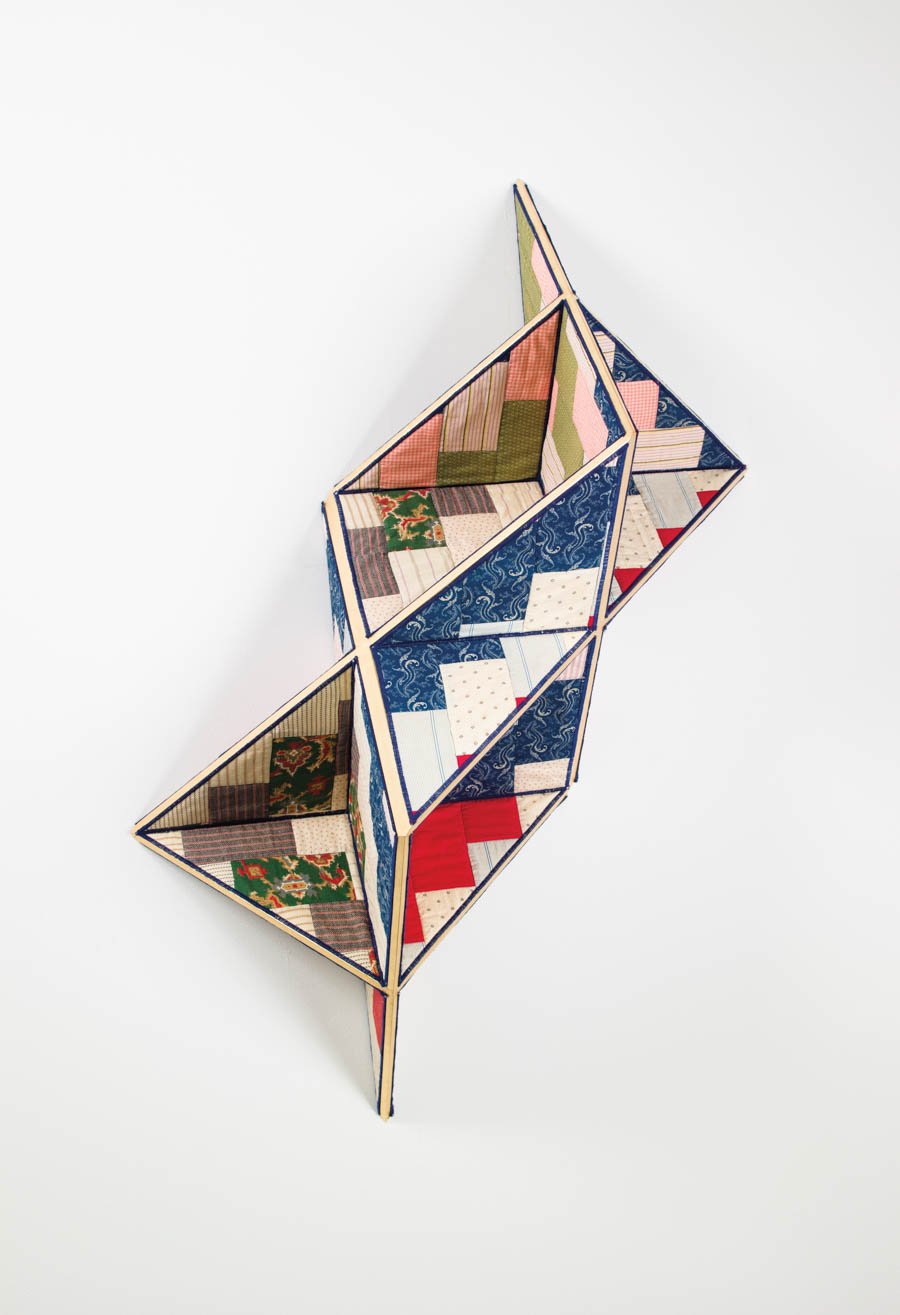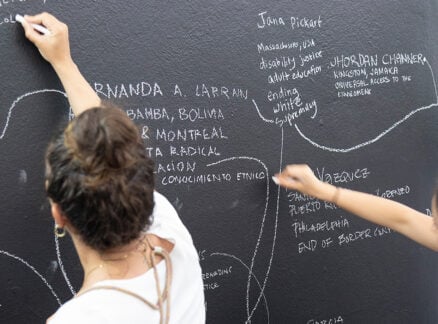
October 12, 2020
Sanford Biggers Uses Traditional Quilting to Issue a New Message
The artist engages with American lore in the exhibition Codeswitch at the Bronx Museum of the Arts.
Surfaces of all kinds are top of mind these days, so we decided to look at all aspects of them, in these articles, from A to Z. Thinking of surfaces less as a product category and more as a framework, we use them as a lens for understanding the designed environment. Surfaces are sites of materials innovation, outlets for technology and science, and embodiments of standards around health and sustainability, as well as a medium for artists and researchers to explore political questions.

Mythology looms large in the work of Sanford Biggers. Take Laocoön, a flaccidly inflated vinyl sculpture the artist installed in David Castillo Gallery in 2016: In name, the piece invokes the Trojan priest whose tale Virgil immortalized in The Aeneid. In form, however, Laocoön taps into a much more contemporary mythos. The body is Fat Albert’s from Bill Cosby’s cartoon Fat Albert and the Cosby Kids, but the prone posture calls to mind the images of Black bodies brutalized by police. Laocoön is all of these at once: a string of connotations that weave a complex portrait of ancient and present imaginaries.
In an exhibition that opened in September at The Bronx Museum of the Arts, Biggers excavates a different American mythology. The show, titled Codeswitch, is the first survey of Biggers’s quilt-based works, and will display more than 60 of them. This series began more than a decade ago, during a commission for Philadelphia’s Mother Bethel A.M.E. Church, once a stop on the Underground Railroad. Quilts, as the story goes, were a way for enslaved people on their path to liberation to share coded knowledge on their journey. Collecting quilts from the 18th and 19th centuries, Biggers began using them as canvases for his own paintings and sculptures, continuing and altering this thread of communication. That historians have disputed the veracity of the quilting legend only makes the artist’s investigation more compelling. As Biggers himself has said, “Two of my favorite materials are history and dialogue.”
You may also enjoy “In Defense of Decoration”
Would you like to comment on this article? Send your thoughts to: [email protected]
Register here for Metropolis Webinars
Connect with experts and design leaders on the most important conversations of the day.







